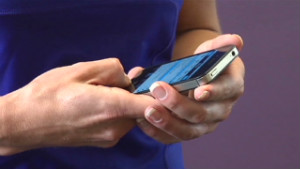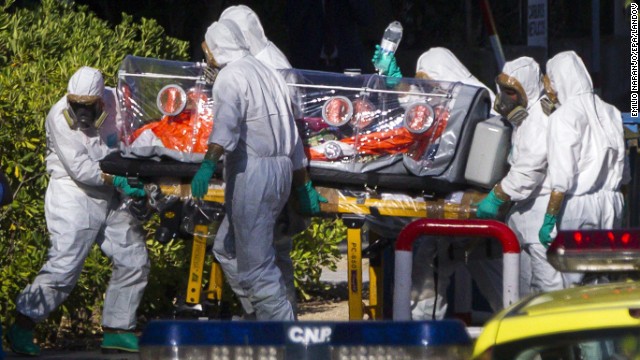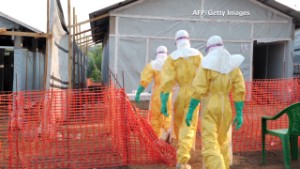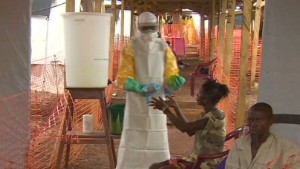Dabigatran
(Pradaxa) was associated with higher risk of bleeding than warfarin
(Coumadin) in a large Medicare population sample, unlike the equal risk
seen in the pivotal RE-LY trial.
(Pradaxa) was associated with higher risk of bleeding than warfarin
(Coumadin) in a large Medicare population sample, unlike the equal risk
seen in the pivotal RE-LY trial.
The relative risk was 30% higher for any bleeding with the direct thrombin inhibitor than warfarin and 58% higher for major bleeding (propensity adjusted rate 9.0% versus 5.9%, P<0.001), Yuting Zhang, PhD, of the University of Pittsburgh, and colleagues reported online in JAMA Internal Medicine.
By contrast, the pivotal RE-LY trial had shown no difference in major bleeding risk
between the two drugs, with an annual rate of 3.36% for warfarin versus
3.11% with the approved 150-mg dose of dabigatran, for a relative risk
of 0.93 (P=0.31).
between the two drugs, with an annual rate of 3.36% for warfarin versus
3.11% with the approved 150-mg dose of dabigatran, for a relative risk
of 0.93 (P=0.31).
The nationally-representative,
5%-sample Medicare analysis did agree qualitatively with the trial
results on higher risk of GI bleeds and lower likelihood of intracranial
bleeding than warfarin.
5%-sample Medicare analysis did agree qualitatively with the trial
results on higher risk of GI bleeds and lower likelihood of intracranial
bleeding than warfarin.
The hazard ratio for GI bleeding on
dabigatran was 1.85 (95% confidence interval 1.64-2.07) versus warfarin,
whereas the hazard ratio for intracranial hemorrhage of 0.32 (95% CI
0.20-0.50) favored dabigatran over the older drug. In RE-LY, the hazard
ratio for major GI bleeding with the 150-mg dabigatran dose versus
warfarin was considerably lower, at 1.50.
dabigatran was 1.85 (95% confidence interval 1.64-2.07) versus warfarin,
whereas the hazard ratio for intracranial hemorrhage of 0.32 (95% CI
0.20-0.50) favored dabigatran over the older drug. In RE-LY, the hazard
ratio for major GI bleeding with the 150-mg dabigatran dose versus
warfarin was considerably lower, at 1.50.
A prior FDA analysis of
Medicare data had agreed with the trial on overall bleeding risk, but
Zhang's group argued that its lack of adjustment for patient factors was
a major flaw.
Medicare data had agreed with the trial on overall bleeding risk, but
Zhang's group argued that its lack of adjustment for patient factors was
a major flaw.
"Dabigatran and warfarin users are very different
in several factors that directly affect the risk of bleeding, and
failing to adjust would bias the results, as our unadjusted estimates
indicate," they wrote.
in several factors that directly affect the risk of bleeding, and
failing to adjust would bias the results, as our unadjusted estimates
indicate," they wrote.
Their results were propensity weighted to
account for demographic variables (age, sex, race, and Medicaid
eligibility) and clinical characteristics, including the stroke risk
CHADS2 score, chronic kidney disease, hypertension, history
of stroke or transient ischemic attack, history of acute myocardial
infarction, diabetes, congestive heart failure, acquired hypothyroidism,
the number of other CMS-priority comorbidities, and history of bleeding
in the year prior to treatment initiation.
account for demographic variables (age, sex, race, and Medicaid
eligibility) and clinical characteristics, including the stroke risk
CHADS2 score, chronic kidney disease, hypertension, history
of stroke or transient ischemic attack, history of acute myocardial
infarction, diabetes, congestive heart failure, acquired hypothyroidism,
the number of other CMS-priority comorbidities, and history of bleeding
in the year prior to treatment initiation.
And there was a
significantly higher prevalence of chronic kidney disease, congestive
heart failure, diabetes, and history of stroke or transient ischemic
attack in those who took warfarin. Propensity score weighting balanced
out those characteristics.
significantly higher prevalence of chronic kidney disease, congestive
heart failure, diabetes, and history of stroke or transient ischemic
attack in those who took warfarin. Propensity score weighting balanced
out those characteristics.
The retrospective analysis of pharmacy
and medical claims from a random 5% sample of Medicare beneficiaries
newly diagnosed with atrial fibrillation from Oct. 1, 2010, through Oct.
31, 2011 included 1,302 starting on dabigatran and 8,102 initiating
warfarin within 60 days of initial diagnosis.
and medical claims from a random 5% sample of Medicare beneficiaries
newly diagnosed with atrial fibrillation from Oct. 1, 2010, through Oct.
31, 2011 included 1,302 starting on dabigatran and 8,102 initiating
warfarin within 60 days of initial diagnosis.
Clinical Implications
"Thus, dabigatran should be prescribed with caution, especially among high-risk patients," they cautioned.
The
risk of major bleeding on dabigatran was particularly high for African
Americans (HR 2.12, 95% confidence interval 1.39-3.24) and patients with
chronic kidney disease (HR 2.07, 95% CI 1.66-2.58).
risk of major bleeding on dabigatran was particularly high for African
Americans (HR 2.12, 95% confidence interval 1.39-3.24) and patients with
chronic kidney disease (HR 2.07, 95% CI 1.66-2.58).
The findings were cause for concern, according to an editor's note accompanying the paper from Rita F. Redberg, MD, calling the bleeding risks of dabigatran "significantly greater than originally appeared at the time of the FDA approval."
"Dabigatran
was approved by the FDA in 2010 via the accelerated pathway after a
6-month review. The haste to approve novel drugs places an increasing
importance on post-approval data to help better understand risks and
benefits," wrote Redberg, a cardiologist at the University of California
San Francisco.
was approved by the FDA in 2010 via the accelerated pathway after a
6-month review. The haste to approve novel drugs places an increasing
importance on post-approval data to help better understand risks and
benefits," wrote Redberg, a cardiologist at the University of California
San Francisco.
"This study reminds us of the importance of
postmarketing data and of having adequate data on risks and benefits to
advise our patients accurately."
postmarketing data and of having adequate data on risks and benefits to
advise our patients accurately."
Judy Mackall, MD,
section chief for cardiac electrophysiology at University Hospitals
Case Medical Center in Cleveland, was less convinced that the data were
influential for practice.
section chief for cardiac electrophysiology at University Hospitals
Case Medical Center in Cleveland, was less convinced that the data were
influential for practice.
"A lot of what's in this study we were already aware of from RE-LY study," she told MedPage Today.
As far as the increased risk of GI bleeding, Mackall pointed to one theory.
"Dabigatran
is delivered as a pro-drug," she said. "About 6% gets absorbed and the
rest passes through the GI tract as an inactive anticoagulant."
is delivered as a pro-drug," she said. "About 6% gets absorbed and the
rest passes through the GI tract as an inactive anticoagulant."
But the lower risk of intracranial bleeding outweighs the concern about GI bleeds, she suggested.
"GI
bleed is significant, yes, it's treatable most often. Getting a lower
risk of intracranial bleeding is a big safety concern," she said.
"Intracranial bleeding is the major bleeding that we worry about because
that's not easily correctable."
bleed is significant, yes, it's treatable most often. Getting a lower
risk of intracranial bleeding is a big safety concern," she said.
"Intracranial bleeding is the major bleeding that we worry about because
that's not easily correctable."
The researchers urged that
because of the GI bleeding risk across all subgroups "it is important
for physicians to explain to patients how to detect gastrointestinal
bleeding so that it can be controlled as early as possible."
because of the GI bleeding risk across all subgroups "it is important
for physicians to explain to patients how to detect gastrointestinal
bleeding so that it can be controlled as early as possible."
But
"intracranial hemorrhage is the most feared complication associated with
warfarin," they agreed, "thus, patients at high risk of intracranial
hemorrhage may be willing to accept the higher risk of other bleeding
events associated with dabigatran for a lower likelihood of intracranial
bleeding. Arguably, this is the subgroup in which dabigatran is most
likely to be a favorable choice in terms of safety."
"intracranial hemorrhage is the most feared complication associated with
warfarin," they agreed, "thus, patients at high risk of intracranial
hemorrhage may be willing to accept the higher risk of other bleeding
events associated with dabigatran for a lower likelihood of intracranial
bleeding. Arguably, this is the subgroup in which dabigatran is most
likely to be a favorable choice in terms of safety."











 Great abs without the crunches
Great abs without the crunches Mobile apps that help you lose weight
Mobile apps that help you lose weight Trainer: work your core, you can do more
Trainer: work your core, you can do more





 Ebola coverage: informing vs. overhyping
Ebola coverage: informing vs. overhyping Delayed response cause Ebola to spread?
Delayed response cause Ebola to spread?  Man loses 7 relatives to Ebola
Man loses 7 relatives to Ebola.jpg)